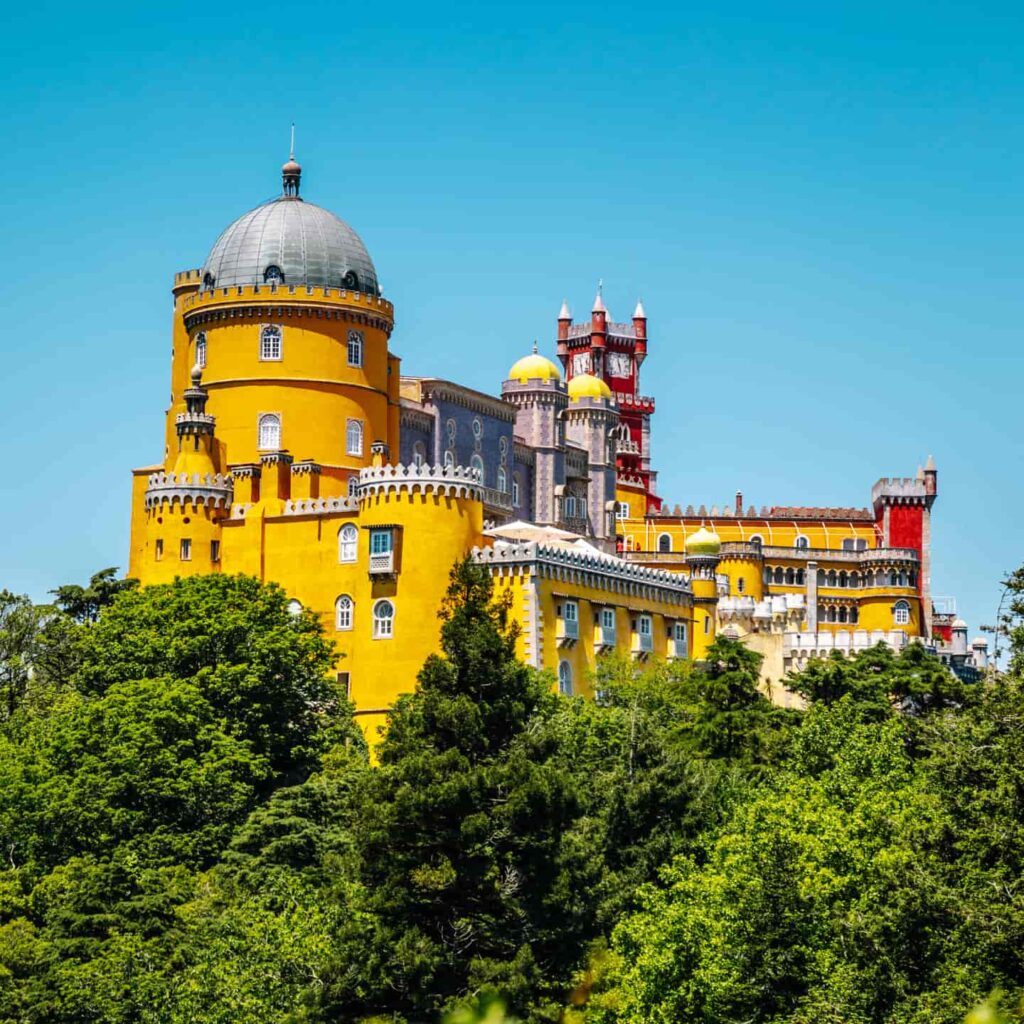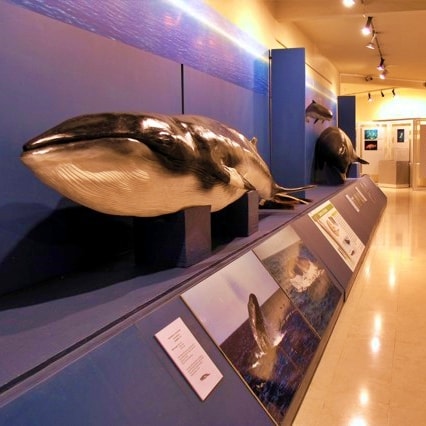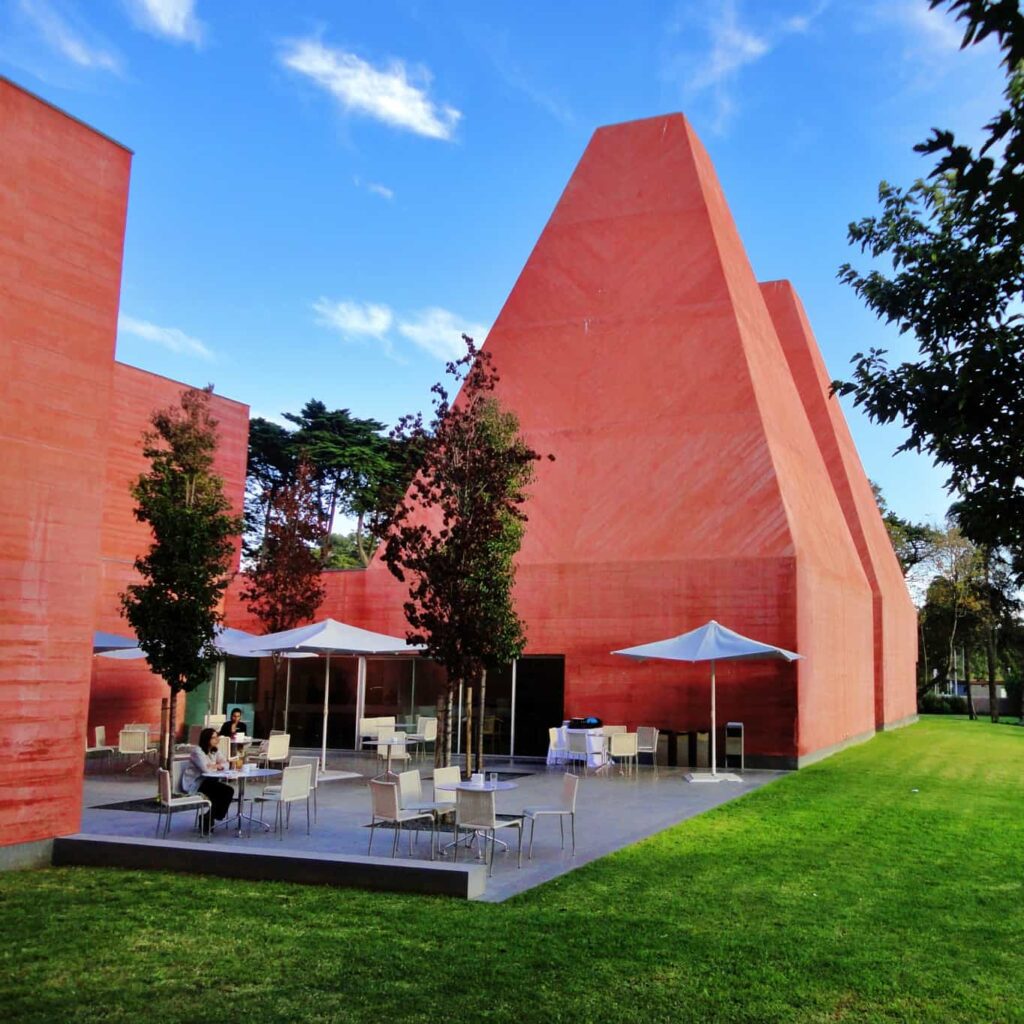Near here


The Pena National Palace, popularly referred to only as Palácio da Pena or Castelo da Pena, is located in the village of Sintra, parish of São Pedro de Penaferrim, municipality of Sintra, in the district of Lisbon, in Portugal. It represents one of the main expressions of 19th century architectural Romanticism in the world, constituting the first palace of its kind in Europe, built about 30 years before Neuschwanstein Castle, in Bavaria. On July 7, 2007 it was elected as one of the Seven Wonders of Portugal. The palace is open for tourist visits, in 2013 it had 755 735 visitors which makes it the most visited monumental palace in the country that year. The Pena Palace was classified as a UNESCO World Heritage Site in 1995.

Convento dos Capuchos (although also called Convento da Santa Cruz) is an old convent of the Order of São Francisco that is located in the Serra de Sintra, in the parish of São Martinho, municipality of Sintra, district of Lisbon, Portugal.


The Museu do Mar-Rei D. Carlos is located in the space of the former Sporting Club de Cascaes, founded in 1879, on the initiative of the then Prince Carlos (future D. Carlos I). For several decades of the 20th century, this building, also known as Clube da Parada, was the scene of many social events, a place of leisure and entertainment. Since 1976, awareness of the importance of the municipality’s maritime heritage and the socio-economic changes that have occurred in the last 30 years, due to the gradual and systematic decrease in fisheries and the production of its derivatives, which for centuries had marked the activities economic conditions and the way of life of many inhabitants, provided the socio-cultural conditions for the creation of a museum dedicated to the sea and the memory of the people connected to it. Then the installation phase of the Museu do Mar began, which was formally inaugurated on June 7, 1992.

Casa das Histórias Paula Rego is a project by architect Eduardo Souto de Moura. Resuming, in a contemporary spirit, some aspects of the region’s historic architecture, it is immediately distinguished in the landscape by two pyramidal structures of the same size and by the red pigmented concrete.
The project, corresponding to the will of the artist Paula Rego, for whom this work was designed and to whom the architect’s choice is due, responds to the many demands of museum functionality, without forgetting the good reception to visitors.


Boca do Inferno is located in Costa da Guia, west of the village of Cascais, in Portugal. The name “Boca do Inferno” attributed to this place is due to the morphological analogy and the tremendous and frightening impact of the waves that are felt there. The characteristic that makes up the rock on the cliff is carbonated in nature. The erosion caused by the action of rainwater that, containing dissolved carbon dioxide, causes the carbonate to dissolve. Through this process cavities and caves are formed inside the limestones. It is quite possible that the place was an old cave. With the abatement of the upper layers, the cave would have been destroyed, leaving a huge cavity in the open.
With unique characteristics, it is a place of leisure, where you can enjoy a divine landscape and magnificent sunsets.
Cantact Us


